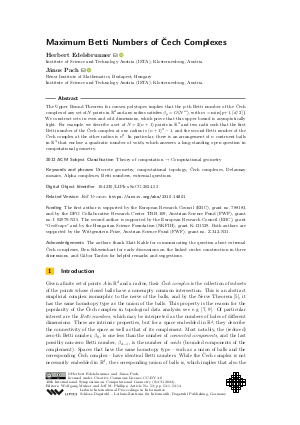LIPIcs.SoCG.2024.53.pdf
- Filesize: 0.73 MB
- 14 pages

 Creative Commons Attribution 4.0 International license
Creative Commons Attribution 4.0 International license

The Upper Bound Theorem for convex polytopes implies that the p-th Betti number of the Čech complex of any set of N points in ℝ^d and any radius satisfies β_p = O(N^m), with m = min{p+1, ⌈d/2⌉}. We construct sets in even and odd dimensions, which prove that this upper bound is asymptotically tight. For example, we describe a set of N = 2(n+1) points in ℝ³ and two radii such that the first Betti number of the Čech complex at one radius is (n+1)² - 1, and the second Betti number of the Čech complex at the other radius is n². In particular, there is an arrangement of n contruent balls in ℝ³ that enclose a quadratic number of voids, which answers a long-standing open question in computational geometry.











Feedback for Dagstuhl Publishing